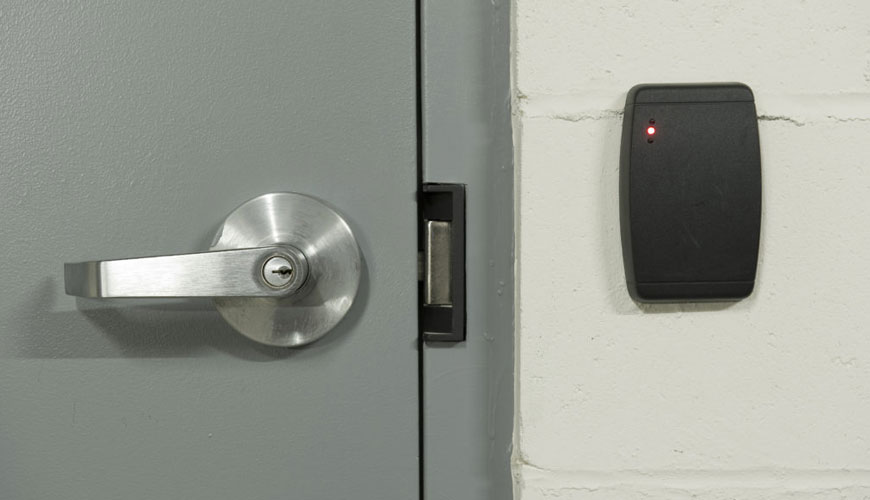

EUROLAB laboratory provides testing and compliance services within the scope of DIN 18257 standard. This standard, safety devices and security badges are designed to protect locks from theft attempts. The requirements for them are regulated by DIN 18257 construction fixtures - protective equipment - terms, dimensions, requirements, description.

A safety device according to this standard is designed to protect the locking mechanism (especially the door pin of the lock) and the profile cylinder on a door against unauthorized mechanical manipulations that serve the purpose of intrusion into the area protected by the door.
A protective badge can partially take over the function of a protective link. To achieve the same level of resistance as a safety device of the same class, their use requires additional measures (eg protection against drill). According to this standard, security luminaires and security badges are divided into four resistance classes according to the burglar-proof effect:
A safety device according to DIN 18257 consists of the following parts:
If the profile cylinder is not equipped with a pull-out protection, the protective coupling or protective escutcheon must have a cylinder cover according to DIN .
The thickness of the outer shield or outer rosette should be chosen by the user or the installer so that the part of the profile cylinder that protrudes from the lock case and comes out of the door surface is covered. Its surface should not protrude more than 3 mm from the surface of the outer shield.
This standard is the basis for police safety recommendations and the publication of a manufacturer's list of theft-proof products that have been tested and approved by the Police Crime Prevention Commission (KPK).
EUROLAB performs all DIN 17020 standard tests in our ISO 18257 approved test laboratories. Our experienced staff use specialized equipment to evaluate terms, dimensions, requirements, test methods and identification for locking cylinders as safety equipment.
To get an appointment, to get more detailed information or to request an evaluation, you can ask us to fill in our form and reach you.